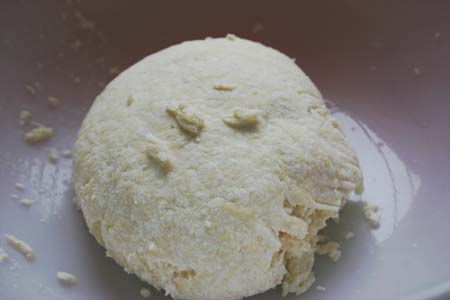Kitchen Curds: From Curd to Microwave
 The following, Kitchen Curds: Mozzarella Part II, is a careful synopsis of curd revival by Molly, the "It's Not You, it's Brie" group photographer and soon-to-be frequent guest blogger (yes, Molly, yes). If you missed the curd dissolution explored in Part I, read about our triumphs and dismay as soon as possible.
The following, Kitchen Curds: Mozzarella Part II, is a careful synopsis of curd revival by Molly, the "It's Not You, it's Brie" group photographer and soon-to-be frequent guest blogger (yes, Molly, yes). If you missed the curd dissolution explored in Part I, read about our triumphs and dismay as soon as possible.
Kitchen Curds: From Curd to Microwave
"Our collective dismay was palpable as the lumpy, watery mess of supposed “cheese” glopped and plopped through Kirstin's fingers. Even Carter, resident cat, cocked his head to the side, well aware something was very wrong.
After consulting the Oracle, I discovered a website that described multiple methods of making mozzarella. One thing each recipe had in common was that the water poured over the curds prior to stretching stage was boiling. Penny, Kirstin and I had spent close to an hour stirring, blowing upon, and ice-cubing what had at one point been a strong pot of muscle-bound, rippling water, so that it would come to “proper” temperature of 108 degrees. I realized immediately that what was missing was heat.
Our ingredients were limited and time was running out, so a do-over was not possible. And, since part of our cheesemaking boot camp was paramilitary training in the jungles of Colombia, us three Cheese Angels were committed. Therefore, the only possible course of action was to forge ahead through that treacherous, lumpy mass.
We discovered another recipe which called for microwaving the mozzarella, so we decided to break down this “curdtural” barrier and perform a stylistic hybridization. We feared, though, that our actions might create a potentially petrifying Medusa-like cheese and turn out to be hard as a rock. Like the brave soldiers we are, however, we carried on.
We nuked the beast for about two minutes, kneaded it around so that the edges wouldn't dry out, poured off the excess whey, and then put it back in the microwave for another two minutes. This process continued until our kneading sessions created a cohesive slug of—could it be?-- potentially our first homemade mozzarella progeny.

Kirstin gingerly held the ball and let it fall delicately back onto the countertop, perhaps traumatized by her earlier disaster. If Midas' overzealous appreciation for money could turn objects to gold, could Kirstin's passion for all foods with rennet generate a cheese baby from scratch? My ebullient desire to stretch the cheese three feet into the air and toss it around like a pizzaiolo was unfortunately vetoed, since nobody wanted a rubbery cheese. However, we took turns pulling and stretching and forming the pretty lump until it glistened happily.

Strangely, though our cheese was not two minutes old, it already appeared to have developed a serious cigarette and black coffee habit. Wasn't mozzarella supposed to be white? Oh well.
We divided our finished product into three small portions, which rested gently on the countertop as we debriefed on the process. Two gallons of organic Straus milk and two and a half hours made three A-cups worth of mozzarella. Was it worth it?
Most definitely!"
The first picture is of a mozzarella salad that Penny made with her A-cup of Our Cheese and sipped with Touraine Rosé. She took the photo in Berkeley.